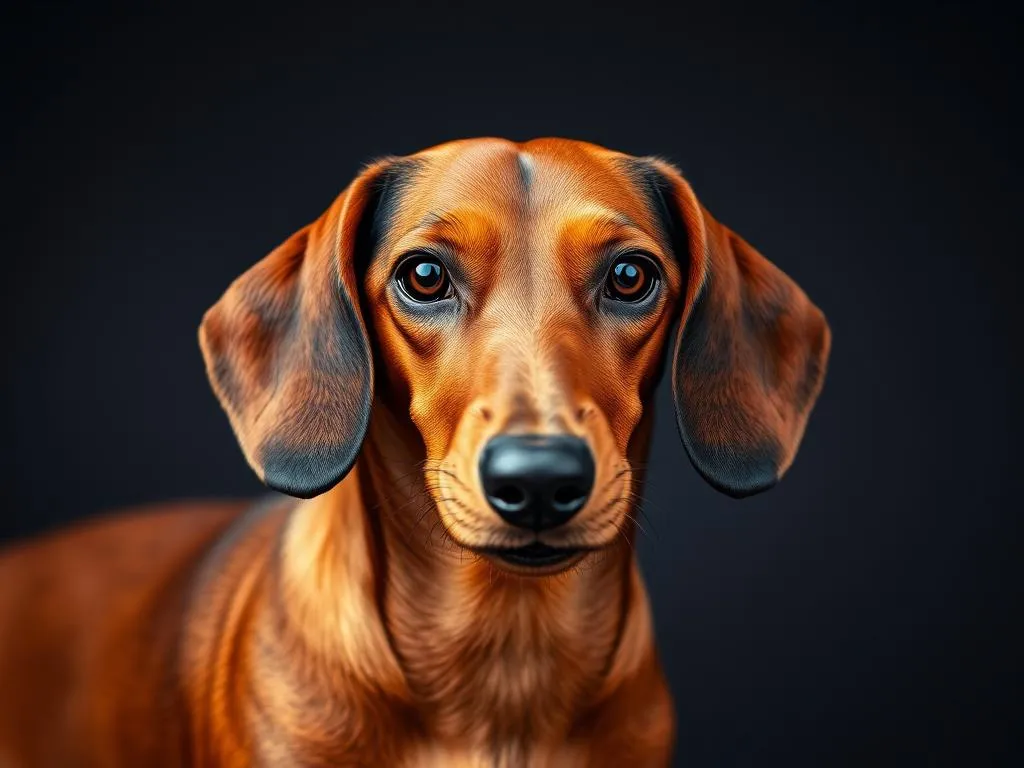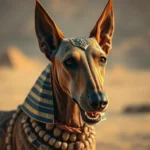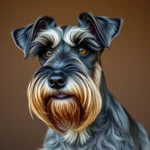
Introduction
Dog breeds are not just a classification; they represent a rich tapestry of history, purpose, and companionship. Each breed comes with its own set of characteristics, temperament, and care requirements, making the choice of a dog a significant decision for any potential owner. Among the many breeds, the Dachshund stands out for its unique appearance and spirited personality. Specifically, the Red Dachshund is a captivating variation that has garnered considerable attention and affection from dog lovers worldwide.
In this article, we aim to delve deep into the world of the Red Dachshund, exploring its characteristics, history, care requirements, and much more. By the end, you will have a comprehensive understanding of this delightful breed and why it may be the perfect companion for you.
Understanding Dog Breeds
Definition of Dog Breeds
A dog breed is a specific strain of domestic dogs that shares certain characteristics, including appearance, behavior, and purpose. These traits are often established through selective breeding, where dogs are bred for specific qualities, such as size, coat type, and temperament. Understanding these characteristics is essential for potential owners, as it helps them choose a breed that fits their lifestyle and preferences.
Overview of Popular Dog Breeds
Some of the most commonly known dog breeds include Labrador Retrievers, Golden Retrievers, German Shepherds, and Bulldogs. Each breed has its own appeal and set of characteristics. In comparison, the Dachshund is known for its long body and short legs, giving it a distinctive silhouette that is easily recognizable. This breed is often characterized by its playful nature and loyalty, making it a popular choice among families and individuals alike.
The Role of Breeding and Genetics
Selective breeding plays a crucial role in defining the characteristics of dog breeds. Genetics determine not only physical traits like size, coat color, and texture but also behavioral tendencies. Understanding genetics can help potential dog owners anticipate health risks and behavioral traits associated with specific breeds, including the Dachshund.
The Dachshund Breed
History of the Dachshund
The Dachshund originated in Germany in the early 17th century, primarily bred for hunting purposes. Its unique shape was designed to allow it to dig into burrows and flush out small game, such as badgers. The name “Dachshund” literally translates to “badger dog” in German, highlighting its original purpose. Over the years, this breed has evolved from a utilitarian hunter to a beloved companion dog, cherished for its playful and affectionate nature.
Characteristics of the Dachshund
Physical Traits
Dachshunds are known for their unique build, featuring a long body, short legs, and a broad head. They typically weigh between 16 to 32 pounds, depending on whether they are standard or miniature. The breed comes in three coat types: short-haired, long-haired, and wire-haired. Each coat type has its own maintenance needs and aesthetic appeal.
Temperament
The temperament of the Dachshund is one of its most appealing attributes. They are known to be clever, curious, and spirited. While they are affectionate with their families, they can also exhibit a bit of a stubborn streak, which can make training a tad challenging. Socialization and early training are essential to ensure they develop into well-rounded pets.
Variations of Dachshunds
Dachshunds come in various colors and patterns, including black and tan, chocolate, and the striking red. Each color variation has its own unique appeal. However, the Red Dachshund is particularly sought after for its vibrant and warm color, making it a favorite among dog enthusiasts.
The Red Dachshund
What Makes a Dachshund Red?
The red coloration in Dachshunds is the result of a specific genetic combination. Unlike other common color variations such as black and tan or chocolate, the red coloration occurs due to a recessive gene. This genetic trait gives the Red Dachshund its distinctive bright coat, which can range from a deep mahogany to a lighter, more golden hue.
Distinctive Traits of the Red Dachshund
In addition to its eye-catching color, the Red Dachshund possesses unique physical characteristics. Their coats are typically smooth and glossy, requiring minimal grooming compared to their long-haired counterparts. Behaviorally, Red Dachshunds may exhibit a slightly more playful demeanor, often being more energetic and social than other color variations.
Popularity and Demand
The demand for Red Dachshunds has surged over the years, with many people drawn to their charming appearance and lively personalities. Statistics show that among Dachshund owners, red is one of the most sought-after colors. This popularity is also fueled by their presence in various media, from movies to social media platforms, where they often capture the hearts of viewers.
Caring for a Red Dachshund
Basic Care Requirements
Caring for a Red Dachshund involves understanding their basic needs. Daily exercise is crucial to keep them healthy and happy. A minimum of 30 minutes of exercise per day is recommended, which can include walks, playtime, or interactive games. Additionally, feeding guidelines should be followed to ensure they maintain a healthy weight, as Dachshunds are prone to obesity due to their low stature.
Grooming and Maintenance
Grooming a Red Dachshund is relatively straightforward, especially for short-haired varieties. Regular brushing helps to remove loose hair and dirt, while baths should be given as needed. Long-haired Dachshunds require more frequent grooming to prevent matting. Regular dental care, nail trimming, and ear cleaning are also essential for maintaining their overall health and hygiene.
Health Considerations
Like all breeds, Red Dachshunds are prone to specific health issues. Common concerns include intervertebral disc disease (IVDD), obesity, and dental problems. Regular veterinary check-ups and preventative care, including vaccinations and dental cleanings, are essential to ensuring a long and healthy life for your furry friend.
Training Your Red Dachshund
Importance of Training
Training is vital for any dog breed, but it holds particular importance for Dachshunds due to their stubborn nature. Well-trained dogs are not only easier to manage but also tend to be more socially well-adjusted. Socialization with other pets and people from a young age is crucial to prevent behavioral issues.
Training Techniques
Positive reinforcement methods work best for training Red Dachshunds. Using treats, praise, and playtime as rewards can motivate them to learn commands and tricks. Common commands to teach include sit, stay, come, and down. Consistency and patience are key, as some Dachshunds may take longer to learn than others.
Behavioral Challenges
Dachshunds can exhibit behavioral challenges, including barking, digging, and stubbornness. These issues can often be managed through proper training and socialization. Engaging them in stimulating activities can also help reduce unwanted behaviors, as a mentally and physically stimulated dog is less likely to act out.
Living with a Red Dachshund
Ideal Living Environment
Red Dachshunds can adapt to various living environments, from apartments to larger homes. However, they do require space to explore and play. Ideally, they thrive in homes where they receive regular exercise and interaction. They are known to be excellent companions for families, singles, and seniors alike.
Socialization with Other Pets
Introducing a Red Dachshund to other pets should be done with care. Early socialization can help them learn how to interact with different animals, reducing the likelihood of territorial behavior. When introducing them to children, supervision is necessary to ensure safe interactions.
Activities and Enrichment
Keeping a Red Dachshund entertained is crucial for their well-being. Activities such as agility training, puzzle toys, and interactive games can provide the mental stimulation they crave. Regular walks and playtime not only keep them physically fit but also strengthen the bond between the dog and its owner.
Conclusion
In summary, the Red Dachshund is a unique and beloved variation of the Dachshund breed, characterized by its vibrant color and spirited personality. Understanding their history, characteristics, and care requirements is essential for anyone considering bringing a Red Dachshund into their home. From their charming quirks to their loyal companionship, owning a Red Dachshund can bring immense joy and fulfillment to your life.
FAQs
Common Questions About Red Dachshunds
-
What is the lifespan of a Red Dachshund?
The average lifespan of a Red Dachshund is between 12 to 16 years, depending on their health and care. -
Are Red Dachshunds good with kids?
Yes, Red Dachshunds are generally good with kids, especially when socialized from a young age. Supervision during playtime is recommended. -
How much exercise does a Red Dachshund need?
A Red Dachshund typically needs at least 30 minutes of exercise daily to maintain a healthy weight and energy level.
General FAQs About Dachshunds
-
What are the differences between the three types of Dachshunds?
The three types of Dachshunds differ primarily in coat type: short-haired, long-haired, and wire-haired. Each type has distinct grooming needs and physical characteristics. -
How do I find a reputable Dachshund breeder?
Look for breeders who prioritize health testing, provide references, and are involved in breed clubs. Visiting the breeder’s facility and meeting the puppies’ parents can also help ensure you are choosing a reputable source.









